Now the Israeli Merkavas have their own visors on the towers
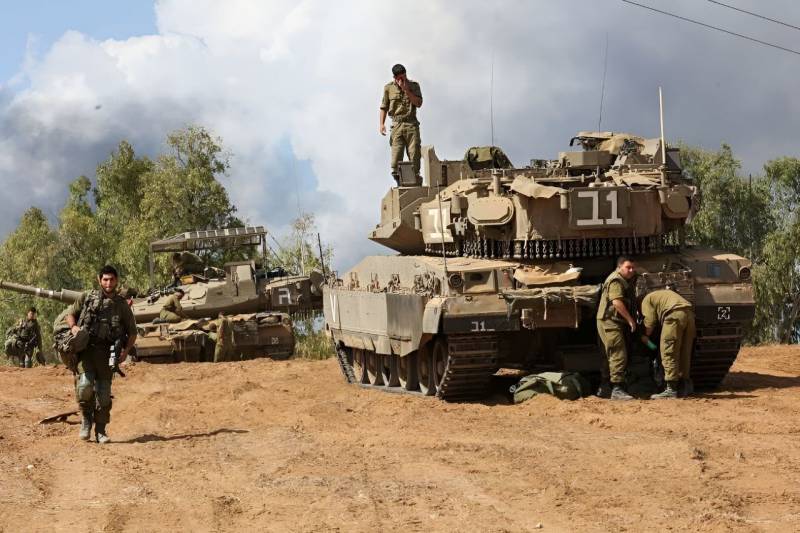
It seems that protective anti-drone visors on the turrets of combat vehicles are becoming a truly international trend. The primitive, which at first they openly laughed at, not seeing any benefit in it, is now a vital equipment tank in modern combat, which is well understood not only by our and Ukrainian military. Thus, tanks modified with similar designs have already appeared among the Chinese and even the Indians, and just the other day Israeli tank crews surprised with a semi-handicraft modification of their Merkavas.
The Israelis rightly fear that their Merkavas, even the latest modifications, will be extremely vulnerable to roof attackers drones, converted to drop ammunition or acting as kamikazes, carrying a cumulative grenade strapped to the “fuselage”. As a matter of fact, this was demonstrated during the recent Hamas attack on Israeli territory, when one of the tanks was hit by a well-aimed blow from above. So, with an invasion of the Gaza Strip, for which the IDF is now actively preparing, the number of such incidents could increase to dozens.
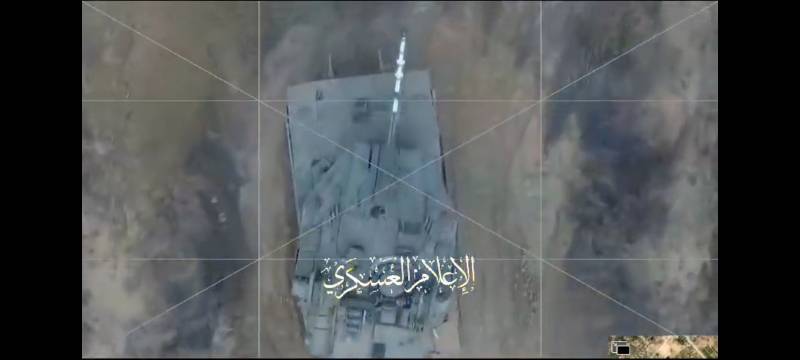
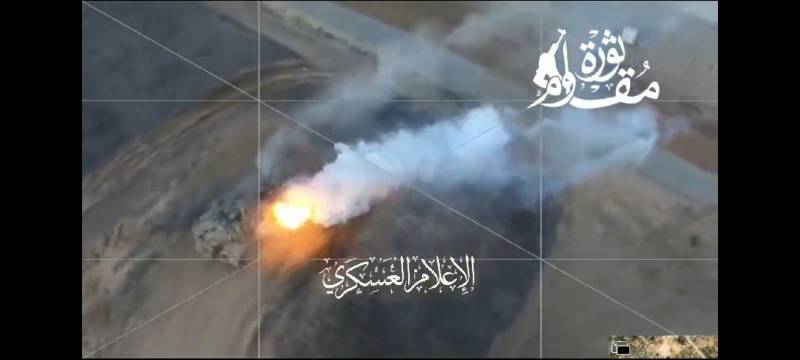
Dropping an anti-tank grenade on an Israeli Merkava
There is nothing surprising in these add-ons - in conditions where there is practically nothing to counter the new threat, a “barbecue” (as the canopies are called) above the roof will do. But here a question arises that has been discussed for several days in the media and on other platforms. It lies in why a tank, stuffed with various electronics, equipped with active protection and sometimes advertised as supposedly invulnerable, requires the installation of a visor against a cheap Chinese drone?
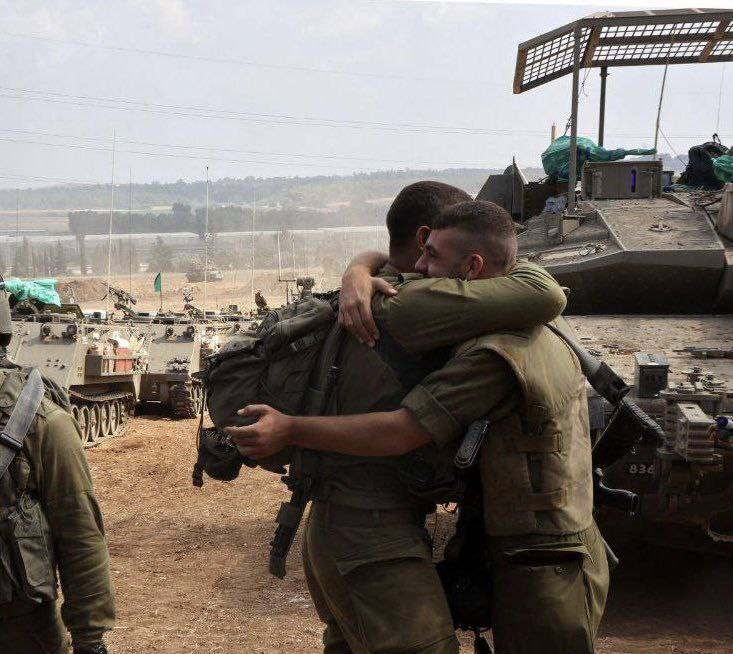
To begin with, it should be noted that the Merkava is not a new vehicle and was created and then over and over again modernized solely under the influence of the classic anti-tank weapons that dominated the battlefield. Of course, the Israelis’ approach to this matter was and remains very specific, as evidenced by its layout and the laid down principles of preserving the lives of the crew. But nothing is implemented in it for passive protection against completely atypical threats. Like any other tank, it is designed for combat work under the influence of familiar missile systems, grenade launchers and artillery systems.
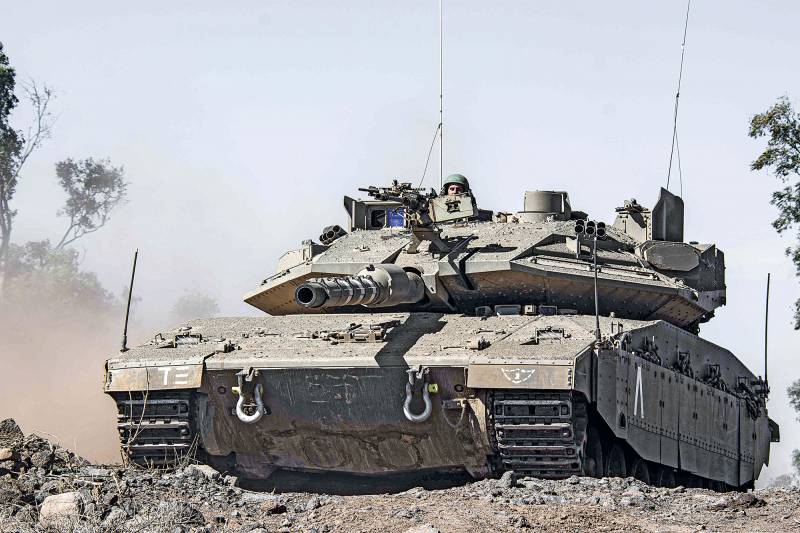
Moreover, despite the striking differences that distinguish the Merkava from its counterparts from other countries, its reservation concept generally follows the ideology of differentiated protection. Therefore, this tank does not have all-round resistance to all types of ammunition, and has never had it in any of its modifications. Everything is standard there: the main armor array is distributed in separate projections to work at heading maneuvering angles. For the Merkava, they are the front of the hull, as well as the turret with massive mounted modules, as the part of the tank most exposed to fire.
Of course, there is also modular protection on the roof of the tower, the thickness of which significantly exceeds that of the main armor of this projection, which is positioned by some as reliable cover from attacks from above. Indeed, to some extent this opinion has a right to life if the attacking weapon flying vertically downwards is a warhead with relatively low penetration. But there is no hope for more, since these armor linings are more designed to withstand hits from armor-piercing projectiles at a relatively small angle from the horizontal surface of the roof and when fired from elevated areas.
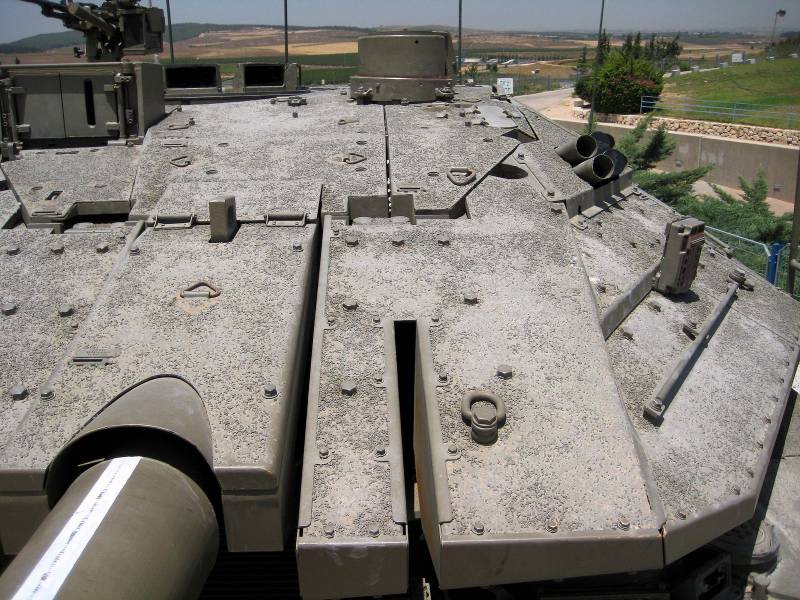
Modular turret armor, including roof
For drones armed with powerful cumulative warheads, which can even be anti-tank grenades of the PG-7 type and their modifications, they no longer pose any difficulty. Based on this, the presence of a visor, which causes premature detonation, becomes not only unnecessary, but even necessary. Of course, if something really strong arrives, the steel structure may not save you, but it will give you confidence. Especially considering that open crew hatches can become a good target for throwing fragmentation ammunition.
True, the vulnerable point of a tank for a drone, as shown by footage of recent battles between Hamas and the IDF, is also the engine-transmission compartment and the driver’s seat, located in the bow of the hull. But at least the tower was partially secured - and that’s already good.
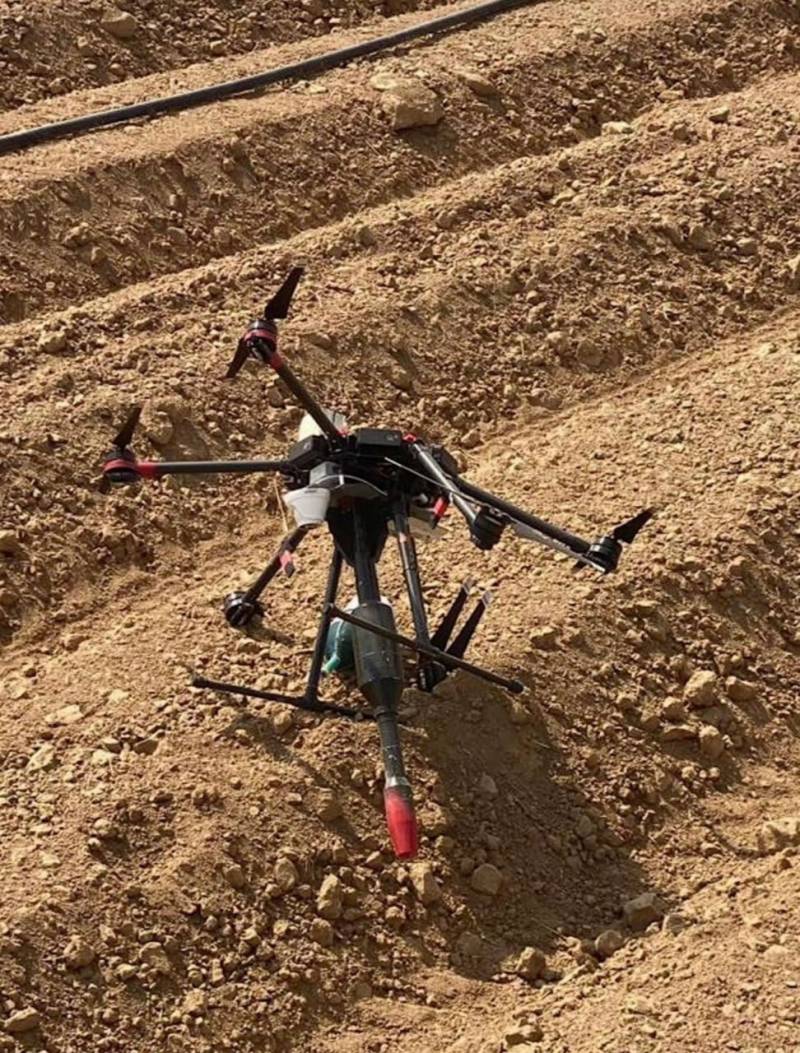
To counter classical anti-tank weapons, an active protection complex for the Merkava was created called “Meil Ruach”, called “Trophy” in the world. And it has, perhaps, already become the object of close attention, as a system that supposedly does not work in real combat. After all, there are more than enough examples of tanks being destroyed without triggering it during the recent Hamas attack. Many have even begun to joke about the fact that the Americans are now tearing their hair out by deciding to equip the Abrams with this complex. But there is no exact answer as to why Trophy did not work when fired by grenade launchers and missile systems. However, it is unlikely that it is ineffective.
Most likely, the reason is simple and banal - on the attacked vehicles it was turned off, and even the open hatch of any of the crew members automatically deactivates it, so as not to concuss and kill the tankman who stuck his head out with shrapnel. What can we say about those episodes when there was no crew in the tank at all or the attack was completely sudden. Moreover, “Trophy” showed good effectiveness against anti-tank systems and RPGs back in 2014, when Israel carried out another invasion of the Gaza Strip. And, in the end, neither the Israelis nor the Americans are interested in buying useless and expensive products of this class.
But with drones that drop a “surprise” on your head, everything is very clear - “Trophy” does not work against such bombings, and should not work. Its main diet is cumulative ammunition, mainly anti-tank grenades and guided missiles, as the most common type of threat on the battlefield, not only in global practice, but also within the typical Israeli theater of operations, where lightly armed military formations come first .
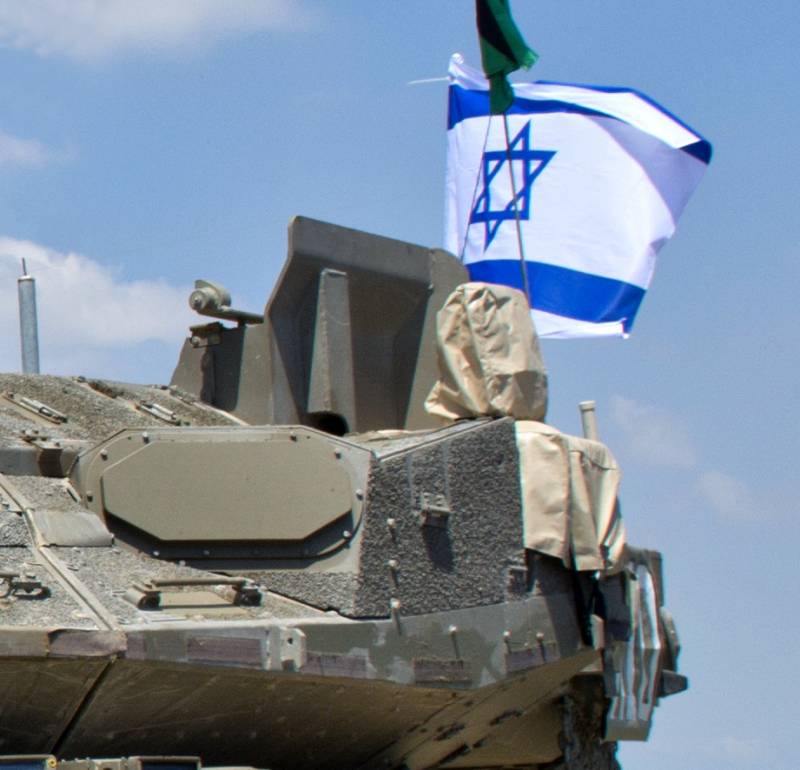
Neither the ultraviolet sensors, which are rumored to have been introduced in the modernized version of the Trophy for long-range reconnaissance of launches and grenades and missiles in flight, nor its radar stations are in principle capable of identifying low-speed objects, which are ammunition falling from drones. And even flying head-on, as if it were an attack site convenient for practicing KAZ, the drone will not receive any reaction from the defense system, since its speed is several times less than the speed of the attacking projectile.
This is a problem not only with the Israeli Trophy, but also with all existing active defense systems in general, including our Arena and Afghanit. More precisely, until recently this was not a problem, but a completely standard job of identifying common projectiles and a reasonable solution that reduced the frequency of false alarms to a minimum - an object flying at a speed of a couple of hundred meters per second can certainly be identified as a threat. But with something that buzzes at a speed of 50–100 km per hour or is completely in free fall, figure it out and distinguish it from completely safe falling objects or a flying bird. Therefore, if someday this electronics is modified to destroy drones and projectiles dropped from them, then identification based on the “threat/false target” principle will have to be worked on.
But in this case, we have to agree that somewhere tank builders and developers of defense systems took a wrong turn - all over the world, and here too. The first bells announcing that drones were becoming serious opponents of tanks rang during the war with the Islamic State banned in Russia. Let us remember that already in 2017, militants began to use drones with suspended grenades against tanks, throwing them straight into open hatches, but since then they have not paid much attention to this.
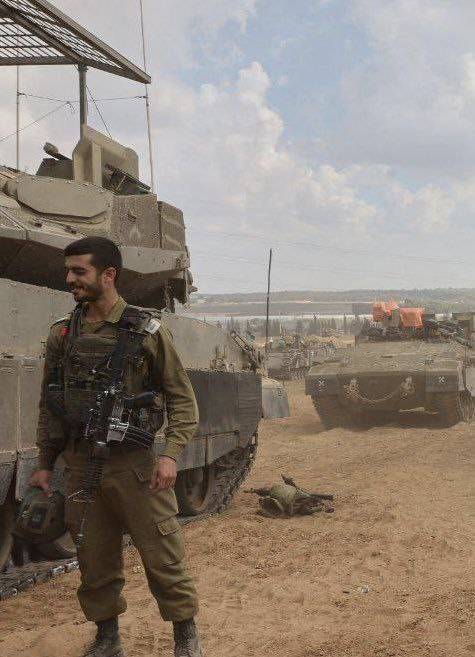
This also applies to Israel, as a leader in the production of unmanned aerial vehicles. Israeli engineers have introduced a bunch of useful electronics into the Merkava, including a smart fire control system with artificial intelligence, IronVision “transparent armor”, which allows you to inspect the surrounding area from inside the tank, and “Trophy” active protection, which shows the crew the location of the enemy attacking them.
But they completely forgot about primitive and frighteningly effective drones that can turn a car into a flaming wreck without much difficulty, which forced them to resort to visors in order to somehow escape from this scourge. Now many say that the IDF has yet to embark on the path of evolution of anti-drone defense, as we have had since the beginning of the North Military District. However, I think they will get through it quickly, even if they are hesitant at the very beginning.
Information